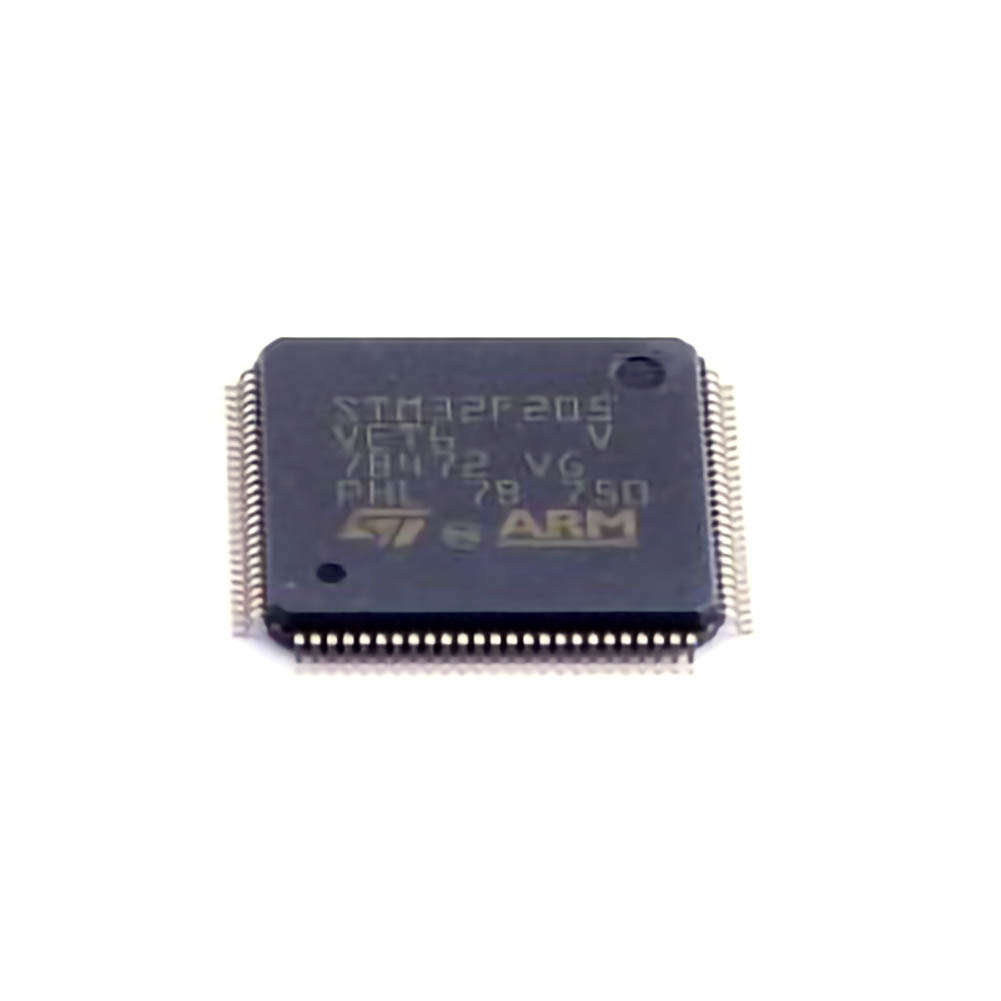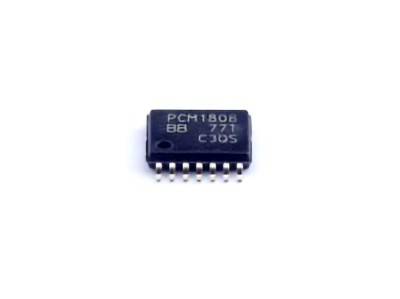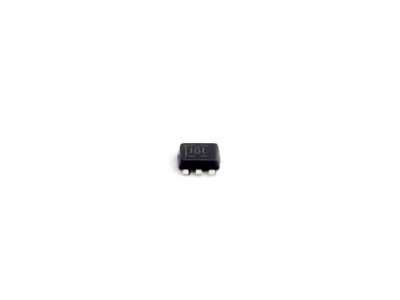
Introduction to STM32F205VET6 in Embedded IoT Devices
The Internet of Things (IoT) is a rapidly evolving technology that connects devices, sensors, and machines over the internet, enabling them to exchange data and operate autonomously. Embedded systems, which serve as the backbone of most IoT devices, require efficient, Power ful, and reliable microcontrollers to ensure seamless operations. Among the various microcontrollers available, the STM32F205VET6 stands out due to its advanced features and suitability for embedded IoT applications.
The STM32F205VET6 is part of the STM32 F2 series of microcontrollers, which are designed by STMicroelectronics. This family of microcontrollers is known for its high-performance ARM Cortex-M3 processor, which offers an ideal balance between speed and energy efficiency. The STM32F205VET6 integrates a wide range of features, making it a preferred choice for designers seeking an optimal solution for embedded IoT devices.
Key Features of STM32F205VET6
The STM32F205VET6 boasts a number of key features that make it an excellent choice for embedded IoT applications. These features include:
ARM Cortex-M3 Processor: The core of the STM32F205VET6 is the ARM Cortex-M3, a 32-bit processor that offers a clock speed of up to 120 MHz. This ensures fast execution of tasks, which is crucial for IoT applications requiring real-time data processing and minimal latency.
Flash Memory and RAM: The STM32F205VET6 comes with up to 512 KB of Flash memory and 96 KB of SRAM. This ample memory size enables the storage of both the firmware and application data, ensuring smooth operation in memory-intensive IoT environments.
Connectivity Options: The STM32F205VET6 provides a wide range of connectivity options, including Ethernet, USB, CAN, and I2C. These interface s enable seamless Communication with other devices and cloud platforms, making it ideal for IoT networking.
Low Power Consumption: With its advanced Power Management features, the STM32F205VET6 is highly energy-efficient, allowing IoT devices to run for extended periods without frequent battery replacements. This is particularly important in remote or difficult-to-maintain environments.
Integrated Peripherals: The microcontroller offers a variety of built-in peripherals such as timers, ADCs (Analog-to-Digital Converters ), DACs (Digital-to-Analog Converters), and PWM (Pulse Width Modulation) outputs. These components simplify hardware design by reducing the need for external components.
Security Features: With integrated hardware-based security features such as encryption, the STM32F205VET6 helps protect sensitive data transmitted by IoT devices, ensuring that devices remain secure in the face of growing cybersecurity threats.
These features make the STM32F205VET6 an ideal choice for a wide range of IoT applications, including smart home devices, wearable health monitors, industrial automation systems, and environmental monitoring tools.
Role of STM32F205VET6 in IoT Device Design
In the design of IoT devices, the choice of microcontroller plays a critical role in determining the performance, scalability, and reliability of the final product. The STM32F205VET6 excels in these areas, making it a reliable platform for IoT device developers.
Real-time Processing: IoT devices often require real-time processing of sensor data and immediate response to events. The STM32F205VET6's high-speed ARM Cortex-M3 core enables fast processing of real-time data, ensuring that IoT devices can react instantly to changes in their environment.
Connectivity and Scalability: IoT devices typically need to communicate with other devices or cloud-based services for data exchange. The STM32F205VET6 supports various communication protocols, enabling developers to create highly scalable systems that can easily integrate with existing IoT networks.
Efficient Power Consumption: Battery-powered IoT devices must be designed to run on minimal power while maintaining high performance. The STM32F205VET6's low-power features, including various sleep modes and power-saving techniques, help maximize battery life and reduce energy consumption.
Compact Design: With its small footprint and integration of multiple functionalities, the STM32F205VET6 helps developers reduce the size and complexity of their designs, making it easier to develop compact IoT devices that are both powerful and efficient.
Practical Applications of STM32F205VET6 in IoT Devices
The versatility of the STM32F205VET6 makes it suitable for a wide range of IoT applications. Some of the most common use cases include:
Smart Home Devices: The STM32F205VET6's connectivity options make it perfect for smart home automation. Devices such as smart thermostats, lighting controllers, and security systems can benefit from the microcontroller's processing power, low power consumption, and secure communication features.
Wearable Health Devices: With built-in ADCs and the ability to handle real-time data processing, the STM32F205VET6 can be used in wearable health devices like fitness trackers and medical monitoring systems. These devices require constant data monitoring and the ability to communicate data to external servers or mobile apps, which the STM32F205VET6 can efficiently manage.
Industrial IoT: In industrial settings, the STM32F205VET6 is used in monitoring and control systems, such as predictive maintenance tools, environmental sensors, and automated machinery. The microcontroller's ability to handle high volumes of data while maintaining low latency makes it ideal for these applications.
Environmental Monitoring Systems: IoT devices used for environmental monitoring—such as air quality sensors, weather stations, and water quality monitors—require reliable data collection and communication capabilities. The STM32F205VET6's combination of analog input/output, connectivity options, and processing power makes it a perfect choice for these systems.
Optimization Techniques for STM32F205VET6 in IoT Device Design
Once the STM32F205VET6 microcontroller is chosen for an IoT device, optimizing its performance, power efficiency, and reliability is crucial for ensuring the success of the application. This section outlines several key optimization techniques that developers can apply to maximize the effectiveness of STM32F205VET6-based IoT devices.
1. Power Management Optimization
One of the most critical considerations in IoT device design is power consumption. IoT devices, especially those running on batteries, need to maximize energy efficiency to ensure long operational lifespans. The STM32F205VET6 offers a variety of power-saving features that developers can leverage to optimize energy consumption.
Sleep Modes: The STM32F205VET6 includes several low-power modes, such as Sleep, Stop, and Standby modes. Developers can program the microcontroller to enter these modes during idle periods, reducing power consumption significantly.
Dynamic Voltage Scaling: The microcontroller supports dynamic voltage scaling, which allows the processor to adjust its voltage levels based on the workload. By operating at lower voltages when possible, the device can save power without sacrificing performance.
Peripheral Management: Developers can selectively turn off unused peripherals to reduce power consumption. For instance, if an IoT device does not require analog-to-digital conversion, the ADC can be powered down to save energy.
2. Real-Time Data Processing Optimization
For IoT devices that process real-time data, optimizing the microcontroller's processing capabilities is essential. The STM32F205VET6’s ARM Cortex-M3 core is equipped with an efficient interrupt handling system, which developers can use to prioritize critical tasks and manage multiple inputs effectively.
DMA (Direct Memory Access ): By using DMA channels, developers can offload data transfer tasks from the CPU, allowing the microcontroller to focus on processing while minimizing interrupt latency and reducing CPU load.
Interrupt Priority Management: The STM32F205VET6 supports a flexible interrupt prioritization system. Developers can assign higher priority to time-sensitive tasks such as data transmission or sensor sampling, ensuring that critical operations are executed promptly.
3. Optimizing Connectivity and Communication
In IoT devices, seamless communication is key to ensuring that the device can send and receive data reliably. The STM32F205VET6 provides a variety of communication protocols, including Ethernet, CAN, and USB, that can be optimized for different IoT use cases.
Low-Bandwidth Operation: For devices that do not require constant high-speed data transfer, developers can implement low-bandwidth communication techniques, such as using lower baud rates or reducing the frequency of transmissions, to reduce power consumption and increase communication reliability.
Error Handling and Retransmission: IoT networks are prone to transmission errors, so it’s essential to implement robust error detection and retransmission protocols. The STM32F205VET6’s built-in support for CRC (Cyclic Redundancy Check) and other error-checking algorithms can ensure that data integrity is maintained.
Security Optimization: In IoT devices, secure communication is essential for preventing unauthorized access and data breaches. The STM32F205VET6 offers hardware encryption features like AES (Advanced Encryption Standard) and RSA (Rivest–Shamir–Adleman) that can be leveraged to enhance data security.
4. Firmware Optimization
Optimizing the firmware running on the STM32F205VET6 is another essential aspect of ensuring an IoT device performs efficiently. Efficient firmware reduces the processing load on the microcontroller, minimizes memory usage, and extends battery life.
Efficient Code Design: Developers should prioritize writing efficient code that minimizes processing overhead. Using fixed-point arithmetic instead of floating-point operations, optimizing loops, and avoiding unnecessary computations are all ways to reduce CPU load.
Memory Optimization: The STM32F205VET6’s memory is finite, so optimizing the use of both Flash and SRAM is essential. Developers should consider using data structures that minimize memory consumption and apply memory management techniques such as garbage collection to optimize memory usage.
5. Debugging and Testing Optimization
Once the IoT device is developed, thorough debugging and testing are critical to ensuring its reliability and performance. The STM32F205VET6 provides various debugging tools, including JTAG and SWD (Serial Wire Debug) interfaces, which allow developers to perform in-depth analysis of device performance, detect errors, and fine-tune optimization strategies.
By using these tools effectively, developers can ensure that the final IoT device meets both functional and performance requirements.
In conclusion, the STM32F205VET6 microcontroller is a powerful, versatile, and energy-efficient platform that is well-suited for embedded IoT devices. By leveraging its features and applying the right optimization techniques, developers can create IoT solutions that are not only high-performance but also energy-efficient, secure, and scalable. Whether it’s for smart homes, wearable health devices, or industrial automation systems, the STM32F205VET6 proves to be a valuable asset in the rapidly growing world of IoT.
If you are looking for more information on commonly used Electronic Components Models or about Electronic Components Product Catalog datasheets, compile all purchasing and CAD information into one place.


